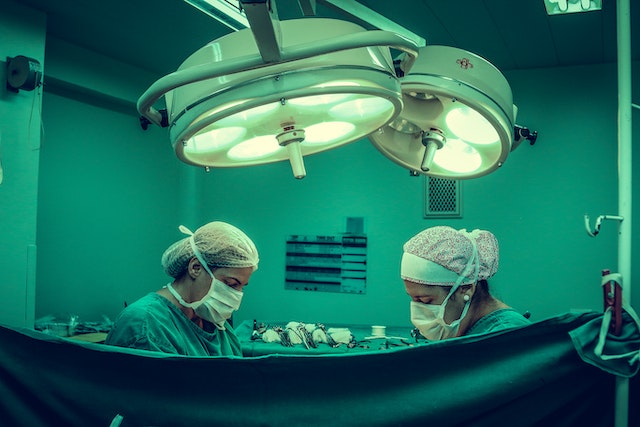In medical field, knee replacement surgery is procedure that gives a new life to people who are suffering from chronic knee pain and have limited mobility. Here are top 5 Mistakes After Knee Replacement which many people may do. The journey to full recovery and restored mobility is not without its challenges. Unfortunately, there are common mistakes that individuals make after knee replacement surgery that can hinder their progress and even lead to complications.
In this post, we’ll look at the Top 5 Mistakes After Knee Replacement mistakes individuals frequently make following knee replacement surgery and offer workable remedies to make rehabilitation go more smoothly. You can optimize the advantages of your knee replacement surgery and confidently reclaim your quality of life by avoiding these errors and adopting the suggested solutions.
Mistake #1: Neglecting Physical Therapy
After knee replacement surgery, physical therapy is crucial to the recovery process. This is one of the Top 5 Mistakes After Knee Replacement that people makes. Unfortunately, some individuals make the mistake of not giving physical therapy the attention it deserves. Neglecting this essential aspect of recovery can lead to slower progress and potentially suboptimal outcomes. A successful recovery depends on understanding the importance of physical therapy and following its guiding principles.
1. The Importance of Physical Therapy
a. Restoring Mobility: Physical therapy is designed to help you regain mobility, strength, and flexibility in your knee joint.
b. Reducing Pain: Properly prescribed exercises can help alleviate pain and discomfort by promoting healing and reducing inflammation.
c. Preventing Complications: Physical therapy can help prevent complications like muscle atrophy and blood clots by keeping your leg active.
2. Solution: Prioritize and Follow Your Physical Therapy Regimen
a. Consultation with a Physical Therapist: Begin your physical therapy under the guidance of a licensed physical therapist who will tailor the program to your specific needs and progress.
b. Adherence to Exercises: Perform the prescribed exercises regularly, both in the clinic and at home, as advised by your therapist.
c. Consistency: Consistency is key to success in physical therapy. Stick to your therapy schedule and follow the plan diligently.
d. Gradual Progression: Physical therapy is a gradual process. Understand that progress may be slow initially but should improve over time.
3. Potential Consequences of Neglecting Physical Therapy
a. Stiffness and Limited Mobility: Without therapy, your knee may become stiff, making it challenging to move and perform daily activities.
b. Delayed Recovery: Neglecting physical therapy can slow down the recovery process, leading to extended periods of pain and discomfort.
c. Risk of Falls: Weakness and lack of balance due to neglected therapy can increase the risk of falls and injuries.
4. Long-Term Commitment to Physical Therapy
a. Post-Surgery Continuation: Physical therapy is not just for the immediate post-surgery period. It may continue for several weeks or months, depending on your progress.
b. Maintenance and Prevention: Even after you’ve recovered, maintaining some form of exercise and mobility routines can help prevent future knee issues and maintain your quality of life.
You can increase your chances of a successful knee replacement recovery by acknowledging the crucial role of physical therapy and committing to a well-structured rehabilitation program. If you want to regain the function and mobility of your knee after surgery, you must prioritize physical therapy as a crucial component of your recovery process.
Mistake #2: Overexertion and Ignoring Rest
A careful balance between exercise and rest is necessary for successful knee replacement recovery. This is another Top 5 Mistakes After Knee Replacement. Pushing yourself too far too soon can cause problems and setbacks in your rehabilitation. Understanding the dangers of overexertion and the significance of giving your body the rest it requires are essential.
1. Understanding the Risk of Overexertion
a. Physical Strain: Engaging in strenuous activities or trying to resume normal routines too quickly can strain your newly replaced knee joint.
b. Swelling and Pain: Overexertion can cause increased swelling and pain in the surgical area, potentially extending your recovery time.
c. Risk of Infection: Excessive activity can raise the risk of infection as your body needs time to heal and strengthen its defenses.
2. The Importance of Rest
a. Promoting Healing: Rest is essential for the healing process. It allows your body to repair tissues and reduce inflammation.
b. Preventing Complications: Adequate rest can prevent complications like blood clots, which are more likely when you’re overly active.
c. Avoiding Muscle Weakness: Rest does not mean complete inactivity. It’s about finding a balance to prevent muscle weakness while still allowing your knee to recover.
3. Solution: Gradual Activity and Scheduled Rest
a. Follow Your Surgeon’s Instructions: Adhere to the activity guidelines provided by your surgeon or physical therapist. These are tailored to your specific case.
b. Listen to Your Body: Pay attention to your body’s signals. If you experience increased pain or swelling, it’s a sign to rest.
c. Pace Yourself: Gradually increase your activity level as your knee gets stronger. Avoid sudden bursts of activity.
d. Scheduled Rest Periods: Incorporate scheduled rest periods into your daily routine to allow your knee to recover.
e. Balanced Rehabilitation: Focus on a balanced rehabilitation program that includes a mix of strengthening exercises and restorative rest.
You can better manage your path following a knee replacement by being aware of the dangers of overexertion and accepting the value of rest, resulting in a quicker and more complete recovery.

Mistake #3: Poor Pain Management
Managing pain is a key component of the healing process following knee replacement surgery. This is also one of the Top 5 Mistakes After Knee Replacement. However, some individuals make the mistake of not effectively addressing their pain, which can lead to unnecessary discomfort and hinder their progress. Your post-surgery experience can significantly change if you understand the value of pain management and know how to manage it.
1. The Consequences of Inadequate Pain Management
a. Reduced Mobility: Unmanaged pain can discourage you from moving and participating in essential exercises, potentially leading to stiffness and reduced mobility.
b. Negative Impact on Recovery: Persistent pain can slow down the recovery process, making it harder to regain strength and function in your knee.
c. Emotional Distress: Uncontrolled pain can also have a significant impact on your emotional well-being, causing stress, anxiety, and depression.
2. Solution: Effective Pain Management Strategies
a. Medication Adherence: Follow your surgeon’s prescribed pain medication regimen diligently. Take the medications as directed to keep pain at bay.
b. Regular Communication: Maintain open communication with your healthcare team regarding your pain levels. This allows them to adjust your medication if necessary.
c. Non-Pharmacological Approaches: Consider non-pharmacological pain relief methods like ice packs, elevation, and breathing exercises.
d. Physical Therapy: Engage in physical therapy sessions as recommended, as they can help alleviate pain while promoting healing and strength.
e. Mental Health Support: Seek mental health support if you are experiencing emotional distress due to pain. Counseling or therapy can be beneficial.
3. The Role of Pain in Recovery
a. Expected Discomfort: Understand that some level of pain and discomfort is normal during the early stages of recovery, but it should be manageable.
b. Progressive Improvement: Over time, pain should gradually decrease as your knee heals and your strength improves.
c. Individual Variation: Pain experiences vary among individuals. What might be tolerable for one person may not be the same for another. Focus on managing your own pain levels effectively.
By actively addressing pain management and following the recommended strategies, you can make your post-knee replacement recovery more comfortable and ultimately achieve better results.
Mistake #4: Skipping Medications
Medication is essential for controlling pain, avoiding infection, and accelerating recovery after knee replacement surgery. Unfortunately, some individuals make the mistake of skipping their prescribed medications or not taking them as instructed. This oversight can have significant repercussions on their recovery. It is essential for a positive post-surgery experience to comprehend the significance of medication adherence and to adhere to the recommended routine. Skipping medicine is also one of the Top 5 Mistakes After Knee Replacement.
1. The Importance of Medication Adherence
a. Pain Management: Medications are prescribed to alleviate post-operative pain, allowing patients to engage in essential rehabilitation exercises comfortably.
b. Infection Prevention: Antibiotics are often prescribed to reduce the risk of infection, a critical concern following surgery.
c. Enhanced Healing: Some medications aid in the healing process by reducing inflammation and supporting the body’s natural recovery mechanisms.
2. Solution: Adherence to Medication Instructions
a. Understanding Medications: Familiarize yourself with the names, purposes, and dosages of the medications prescribed by your healthcare provider.
b. Timely Administration: Take your medications as directed, adhering to the prescribed schedule. Consider using alarms or reminders to ensure consistency.
c. Avoid Self-Adjustment: Do not modify dosages or discontinue medications without consulting your healthcare team.
d. Effective Communication: If you encounter adverse effects or have concerns about your medications, promptly communicate with your healthcare provider.
3. Potential Consequences of Skipping Medications
a. Increased Pain: Skipping pain medications can lead to heightened discomfort, hindering your ability to participate in rehabilitation exercises effectively.
b. Infection Risk: Neglecting antibiotic medications may elevate the risk of infection, potentially requiring additional treatments and prolonging your recovery.
c. Delayed Healing: Certain medications are essential for promoting the healing process. Skipping them can slow down your recovery timeline.
4. Medication Management for the Long Term
a. Follow-Up Appointments: Attend follow-up appointments with your surgeon to monitor your progress and adjust medications as necessary.
b. Gradual Reduction: Some medications may require gradual tapering rather than abrupt discontinuation.
c. Exploring Alternatives: As your recovery advances, consider non-pharmacological pain management techniques that can reduce your reliance on medications.
You can ensure a quicker and more effective recovery from knee replacement surgery by understanding the significance of medication adherence and continuously adhering to the recommended regimen. Medications are a vital component of the post-surgery process, supporting pain management and overall healing.
Mistake #5: Ignoring Nutrition and Hydration
Proper nutrition and hydration are often overlooked aspects of the recovery process after knee replacement surgery. This one of Top 5 Mistakes After Knee Replacement which people usually do. Some people make the error of disregarding their nutritional requirements, which can slow down the healing process and lengthen rehabilitation. Making diet and hydration a priority and being aware of their importance are crucial for a positive recovery from surgery.
1. The Role of Nutrition and Hydration
a. Supporting Healing: Adequate nutrition provides the essential nutrients and energy required for tissue repair and recovery.
b. Minimizing Complications: Proper hydration helps prevent issues like urinary tract infections and constipation, which can arise from inadequate fluid intake.
c. Maintaining Overall Health: Good nutrition supports your overall health, helping to boost your immune system and prevent infections.
2. Solution: Prioritize Proper Nutrition and Hydration
a. Balanced Diet: Consume a well-balanced diet rich in vitamins, minerals, and protein to support the healing process. Put an emphasis on foods like whole grains, lean protein, fruits, and veggies.
b. Adequate Fluid Intake: Ensure you’re drinking enough water throughout the day to stay hydrated. Dehydration can hinder recovery and raise the possibility of complications.
c. Consult a Dietitian: If you have specific dietary concerns or restrictions, consider consulting a dietitian who can help create a personalized nutrition plan.
3. Potential Consequences of Neglecting Nutrition and Hydration
a. Delayed Healing: The body’s natural healing processes might be slowed down by inadequate nourishment, which can make recovery time longer.
b. Increased Risk of Complications: Poor hydration can lead to complications like urinary tract infections, constipation, and kidney issues.
c. Weakened Immune System: Insufficient nutrition can weaken your immune system, making you more susceptible to infections.
4. Long-Term Commitment to Nutrition and Hydration
a. Post-Recovery Nutrition: Continue to maintain a healthy diet and hydration routine even after recovery to support your long-term well-being.
b. Monitoring Hydration: Pay attention to your hydration levels and ensure you’re drinking an adequate amount of water each day.
c. Dietary Supplements: If necessary, consider dietary supplements recommended by your healthcare provider to address specific nutrient deficiencies. If you are obese then consider for keto diet.
You may improve your recovery and guarantee a more successful knee replacement procedure by realizing the significance of nutrition and hydration and incorporating them into your post-surgery regimen. Maintaining proper nutrition and water is essential for your body’s general health and ability to heal.
Psychological issues with knee replacement surgery
Here are some psychological issues and their solutions
#1: Depression and Anxiety
- Solution: Stay connected with friends and family for emotional support. Consider speaking with a therapist or counselor to address feelings of depression or anxiety.
#2: Frustration and Impatience with Recovery
- Solution: Set realistic expectations for your recovery timeline. Celebrate small milestones and stay positive. Engage in activities you enjoy to pass the time and boost your mood.
#3: Fear of Movement and Falling
- Solution: Work closely with your physical therapist to build confidence in your mobility. Use assistive devices as recommended. Focus on balance and strengthening exercises.
#4: Uncertainty about the Outcome
- Solution: Communicate openly with your healthcare team. Discuss your concerns and ask questions to gain clarity about the surgery and expected outcomes. Seek support from others who have undergone knee replacement.
#5: Body Image Concerns
- Solution: Recognize that knee replacement is a step toward improved quality of life. Focus on the functional benefits of the surgery rather than any perceived physical changes. Practice self-compassion.
Addressing these psychological issues with the suggested solutions can help individuals cope with the emotional aspects of knee replacement surgery and ensure a more positive overall experience.
Additional Tips for a Smooth Recovery
While addressing the Top 5 Mistakes After Knee Replacement is crucial, there are several other considerations that can further enhance your recovery process and overall well-being.
1. Maintain a Positive Mindset
a. Emotional Resilience: Stay positive and maintain a hopeful outlook. A positive mindset can contribute to better physical recovery.
b. Mental Health: Seek support from friends, family, or a mental health professional if you’re experiencing emotional challenges during recovery.
2. Assistive Devices
a. Mobility Aids: Utilize assistive devices such as crutches, canes, or walkers as recommended. They can aid in balance and reduce stress on your healing knee.
b. Home Modifications: Make necessary modifications to your home, such as installing handrails or grab bars, to create a safe environment.
3. Plan for Transportation
a. Arranging Rides: Ensure you have reliable transportation to attend medical appointments and therapy sessions, especially if you’re unable to drive initially.
4. Nutritional Supplements
a. Consultation: Talk to your healthcare provider about dietary supplements that may support your recovery, such as vitamin D or calcium.
5. Weight Management
a. Maintain a Healthy Weight: If applicable, focus on maintaining a healthy weight to reduce stress on your knee joint.
6. Stay Informed
a. Educate Yourself: Learn about knee replacement surgery and recovery. Knowing what to expect can alleviate anxiety and prepare you for the process.
7. Communicate with Your Healthcare Team
a. Regular Check-Ins: Attend follow-up appointments as scheduled and maintain open communication with your surgeon, physical therapist, and other healthcare professionals.
8. Gradual Return to Activities
a. Work and Activities: Discuss with your healthcare team when it’s safe to return to work or resume specific activities and hobbies.
9. Be Patient
a. Understanding Timeframes: Understand that recovery varies from person to person. Be patient with yourself and avoid comparing your progress to others.
10. Celebrate Milestones
Acknowledging Achievements: Celebrate small milestones in your recovery journey. Recognizing progress can boost motivation.
By incorporating these additional tips into your post-knee replacement recovery plan, you can create a supportive and conducive environment for healing. Remember that every recovery is unique, and with the right strategies and mindset, you can regain your mobility and quality of life after knee replacement surgery.
The final words about Top 5 Mistakes After Knee Replacement:
In the journey of recovering from knee replacement surgery, avoiding common mistakes can make all the difference in achieving a successful and smoother rehabilitation. Neglecting physical therapy, overexertion, poor pain management, skipping medications, and ignoring nutrition and hydration are pitfalls that can hinder your progress. By understanding these challenges and implementing the provided solutions, you can maximize the benefits of your knee replacement surgery.
Keep in mind that a full recovery needs perseverance, effort, and a dedication to adhering to medical advice. You can confidently reclaim your mobility and quality of life by placing a high priority on your health and following suggested measures. Your path to a pain-free and active future starts with avoiding these post-surgery mistakes and embracing the journey of healing and rehabilitation.
FAQs about Top 5 Mistakes After Knee Replacement
1. What is knee replacement surgery, and why is it performed?
- Knee replacement surgery, also known as knee arthroplasty, is a surgical procedure to replace a damaged or arthritic knee joint with an artificial implant. Patients with severe knee problems including osteoarthritis or rheumatoid arthritis undergo it to relieve persistent knee discomfort and regain mobility.
2. How can I know whether I need to have surgery to replace my knee?
- Your orthopedic surgeon will evaluate your condition based on factors like pain, joint stiffness, and X-ray results. If conservative treatments like medications and physical therapy haven’t provided relief, and your knee pain significantly affects your daily life, your surgeon may recommend knee replacement.
3. What are the different types of knee replacement surgery?
- The two primary types of knee replacement surgery are total knee replacement (TKR) and partial knee replacement (PKR). TKR replaces the entire knee joint, while PKR addresses only the damaged portion of the knee.
4. What should I expect during the recovery period after knee replacement surgery?
- Recovery involves physical therapy, pain management, and gradually increasing activity levels. Initially, you may use assistive devices like crutches. Full recovery can take several months, and individual experiences vary.
5. How long does knee replacement surgery typically take?
- Knee replacement surgery usually takes about 1 to 2 hours. However, the actual time may vary depending on the complexity of the case.
6. Are there any risks involved in having a knee replacement?
- Like all surgeries, knee replacement carries some risks, including infection, blood clots, implant loosening, and nerve damage. Your surgeon will discuss these risks with you before the procedure.
7. Can I resume physical activities like jogging or playing sports after knee replacement surgery?
- While knee replacement can significantly improve your mobility, high-impact activities like jogging may not be recommended. Consult your surgeon for guidance on returning to specific activities.
8. How long will the artificial knee joint last?
- The lifespan of a knee implant varies, but many can last 15-20 years or more with proper care. Factors like activity level and implant type can influence longevity.
9. Are there any dietary considerations during knee replacement recovery?
- Maintaining a balanced diet rich in vitamins and minerals can aid in the healing process. Adequate hydration is also crucial for recovery.
10. What can I do to lessen issues following surgery and speed up my recovery?
- Following your surgeon’s instructions, attending physical therapy, taking prescribed medications, and maintaining a positive mindset are essential steps to minimize complications and achieve a successful recovery.
References
- Rehabilitation protocols following total knee arthroplasty: a review of study designs and outcome measures
- TREATMENT-Total Knee Replacement
- Knee-Specific Pain Management Strategies in Total Knee Arthroplasty
- DIET PLAN AFTER KNEE REPLACEMENT SURGERY
- KNEE-replacement-Patient-Education-Booklet-July-2020.pdf










